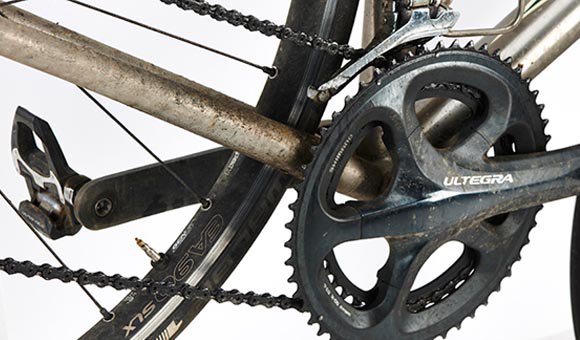Five Things You Should Never Do Before a Ride
Want to make the most of your next ride? Avoid these rookie mistakes.
Want to make the most of your next ride? Avoid these rookie mistakes. – By Kelsey Molseed
If you want to keep up with the group on your next long ride, you need to be prepared. But preparation is about more than what you should do—it’s also about what you shouldn’t do. Below are five things you should stop doing:
Eating foods high in fat and fibre
Your pre-ride fuel should be a good source of energy that breaks down quickly. Fat and fibre don’t qualify. “High-fibre foods, such as salads or large portions of non-starchy vegetables, take a while to digest and therefore stay in the stomach longer,” says Barbara Lewin, sports nutritionist. The same goes for foods with high fat content. Apart from potentially making you feel sick, foods that sit in your stomach aren’t digesting fast enough to do you any good. “This means that the food is not efficiently breaking down to provide energy to the muscles.” Instead, says Lewin, opt for carbohydrates and lean proteins.
Chugging lots of water
Water, obviously, is necessary, but the “everything in moderation” rule applies. If you haven’t had much water leading up to your ride, you might be tempted to make up for it by downing a full glass or two. That’s not a good idea. Your stomach and liver can only process so much water at once. Drink too much, and it will just slosh around in your stomach and have you stopping for a bathroom break early and often. Drink way too much, and you could actually overdose on water, causing a condition called hyponatremia. While pretty rare, hyponatremia can bring on symptoms that will end your ride, including headache, fatigue, and nausea. It’s best to (slowly) drink 500ml of water 1 to 2 hours before your ride, leaving enough time to use the bathroom before you leave. During the ride, take a few sips of water every 15 to 20 minutes.
Leaving without checking your gear
Twenty minutes into a day-long ride is not a good time to realise your brakes are loose. Jack Sheehafer, Women’s Cycling Program Manager, advises that you do a quick gear check before heading out. “Cut tyres, loose brakes or a broken cleat can leave you out on the road doing maintenance when you should be riding,” he says. If you’re travelling for a long bike trip, you might want to inspect your gear several days in advance so you’ll have time to get to a bike mechanic, if need be. At the very least, do a quick look-over before you head out. Make sure your chain spins smoothly, your wheels don’t wobble, and your brakes work well.
Static stretching
While stretching itself is not a bad thing, reaching down to touch your toes for two minutes before your muscles are warmed up is not a good idea. There’s some debate on the issue, but most studies indicate that static stretching before a workout can actually weaken your muscles. Start your ride with 10 minutes of easy pedalling to warm up your muscles. Static stretching does serve a purpose, and some stretches are particularly good for cyclists, but it’s best to wait until after a ride.
Leaving without telling anyone where you’re going
Thinking about getting injured and stranded is no more appealing than actually getting injured and stranded, but it’s best to be prepared. “Let somebody know where you’re going and bring an ID,” says Sheehafer. You should also let someone know how long you plan to be gone, and, of course, bring a cell phone. At the very least, your Instagram opportunities are endless on a long ride. More importantly, you’re more likely to be found quickly if you do end up hurt on your ride.


